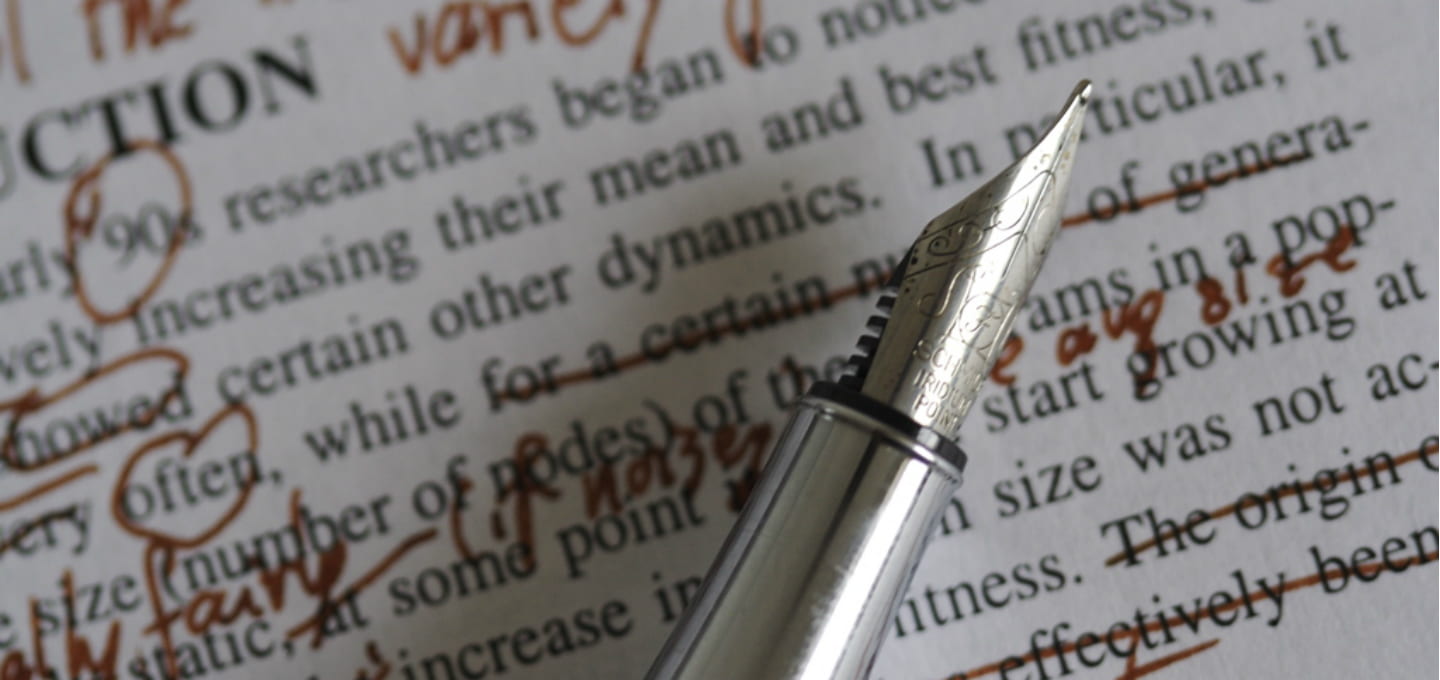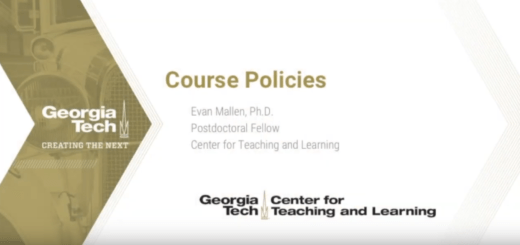From “I Caught You!” to “I Taught You!”: Using Turnitin To Improve Student Writing

Starting this semester the Georgia Tech community gained access to Turnitin within the Canvas system. At its core, Turnitin is a web-based program that checks submitted work for unoriginal content that has been published elsewhere on the web or submitted previously to the Turnitin database. While some instructors are satisfied to simply leave it there and just use this tool as a plagiarism checker and deterrent to catch students cheating, others have taken a different path and found that Turnitin can be a very powerful tool to help students develop better writing habits and submit more thoughtful work regardless of discipline.
Several research studies have been conducted over the years using Turnitin as a means to improve student writing (Baker, Thronton, & Adams, 2011; Davis, 2007; Graham-Matheson & Starr, 2013; Rolfe, 2011). Some found by giving students access to submit drafts to Turnitin and receive their own reports, students were able to become aware of their own unoriginal content and submitted final papers that contained large reductions in unoriginal content. In a lot of cases student unoriginal content seemed to be unintentional and often a surprise to students who were unaware they were not paraphrasing and citing correctly or realized just how much of their paper was comprised of direct quotes. Researchers pointed out that this seems particularly the case with international students who may come from a different academic culture where the copying and drawing upon previous authors tends to be a common practice rather than considered plagiarism.
This passive usage of simply letting students run drafts through Turnitin not only resulted in better final papers due to a decrease in unoriginal content, but it also largely resulted in a positive experience for students. Graham-Matheson and Starr (2013) had students comment on their survey that “The draft facility (of Turnitin) enables you to double check that all information is appropriately referenced and not plagiarized.” and another who stated “It teaches me how to avoid it (plagiarism). It encourages me to read more and support my ideas with empirical evidence.” Similar positive comments were found in the various studies that allowed students access to run drafts and read their reports. This seems to show that the simple act of allowing for draft runs can largely impact how students view and use the Turnitin tool.
It encourages me to read more and support my ideas with empirical evidence.
While providing students with the ability to submit a draft to Turnitin and see their unoriginality report seems to be a useful method on its own, some researchers went even further and actively utilized  Turnitin to provide a learning opportunity for students. In her research, Mary Davis (2007) found positive results when using Turnitin in an academic writing class as a means of refining student writing. In her usage, Mary not only provided students with their Turnitin report, but held a session with students where they could openly discuss the report, what it meant, and why certain things were flagged as unoriginal content before beginning to rework their draft into a final submission. Mary found that while students were able to see where their submissions were flagged as unoriginal they sometimes were left confused as to why it was flagged. Through utilizing Turnitin in this way, Mary was able to positively impact student’s ability to cite correctly, diversify their sources, and paraphrase appropriately; all of which leads to helping students become better writers. As a result of this study, Mary advocates for the usage of Turnitin not just as a self-referenced report for students, but also as a possible tool for tutors. In this way, tutors can have students bring their reports with them and expedite the review process and allow students and tutors to make the most out of sessions.
Turnitin to provide a learning opportunity for students. In her research, Mary Davis (2007) found positive results when using Turnitin in an academic writing class as a means of refining student writing. In her usage, Mary not only provided students with their Turnitin report, but held a session with students where they could openly discuss the report, what it meant, and why certain things were flagged as unoriginal content before beginning to rework their draft into a final submission. Mary found that while students were able to see where their submissions were flagged as unoriginal they sometimes were left confused as to why it was flagged. Through utilizing Turnitin in this way, Mary was able to positively impact student’s ability to cite correctly, diversify their sources, and paraphrase appropriately; all of which leads to helping students become better writers. As a result of this study, Mary advocates for the usage of Turnitin not just as a self-referenced report for students, but also as a possible tool for tutors. In this way, tutors can have students bring their reports with them and expedite the review process and allow students and tutors to make the most out of sessions.
As the research seems to indicate, there is great value and a positive impact on student learning to be found in going beyond the basic usage of Turnitin as a  checker of unoriginal content. Just the act of allowing students to run drafts and see their reports seems to make for a more positive learning experience and increases student writing abilities. Going beyond that and engaging students with their reports so that they can truly understand what it is they are doing wrong and have their confusion about writing cleared up is certainly a method that can enable student to improve their writing even further. All of this is just with the basic usage of Turnitin’s unoriginality report; which is actually just one part of several tools Turnitin users have available to them. There are other additional tools inside of Turnitin, such as a grammar and style checker and an instructor feedback system, which can also be used to further educate students about their writing. In the end, educating students to recognize the unoriginal issues with their paper, as opposed to just catching them plagiarizing, is a much more effective method of using Turnitin and has been shown to lead to positive learning opportunities, increase student satisfaction, and create better overall student writing.
checker of unoriginal content. Just the act of allowing students to run drafts and see their reports seems to make for a more positive learning experience and increases student writing abilities. Going beyond that and engaging students with their reports so that they can truly understand what it is they are doing wrong and have their confusion about writing cleared up is certainly a method that can enable student to improve their writing even further. All of this is just with the basic usage of Turnitin’s unoriginality report; which is actually just one part of several tools Turnitin users have available to them. There are other additional tools inside of Turnitin, such as a grammar and style checker and an instructor feedback system, which can also be used to further educate students about their writing. In the end, educating students to recognize the unoriginal issues with their paper, as opposed to just catching them plagiarizing, is a much more effective method of using Turnitin and has been shown to lead to positive learning opportunities, increase student satisfaction, and create better overall student writing.
If you’re interested to learn more about using Turnitin at GaTech, please visit the GaTech Turnitin webpage to find resources, such as instructor guides and getting started documents, as well as information about upcoming workshops.
References
Baker, R.K., Thronton, B., & Adams, M. (2011). An Evaluation of the Effectiveness of Turnitin.Com as a Tool for Reducing Plagiarism in Graduate Student Term Papers. College and Teaching Methods & Styles Journal 4, 9. Doi: https://doi.org/10.19030/ctms.v4i9.5564
Davis, M. (2007). The role of Turnitin within the formative process of academic writing: a tool for learning and unlearning. Brookes eJournal of Learning and Teaching, 2. Retrieved from https://www.researchgate.net/ publication/281848114_The_role_of_ Turnitin_within_the_formative_process_of_ academic_writing_a_tool_for_learning_and_unlearning
Graham-Matheson, L., & Starr, S. (2013). Is it cheating – or learning the craft of writing? Using Turnitin to help students avoid plagiarism. Research in Learning Technology, 21. doi: https://doi.org/10.3402/rlt.v21i0.17218
Rolfe, V. (2011). Can Turnitin Be Used to Provide Instant Formative Feedback? British Journal of Edcuational Technology, 42, 4. doi: https://doi.org/10.1111/j.1467-8535.2010.01091.x




